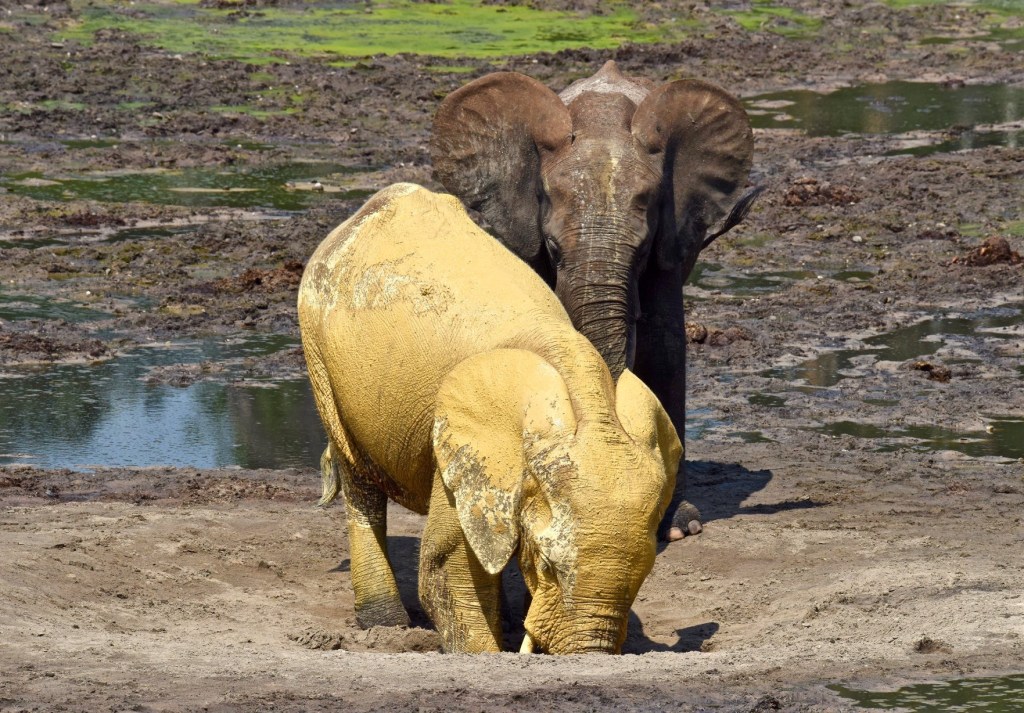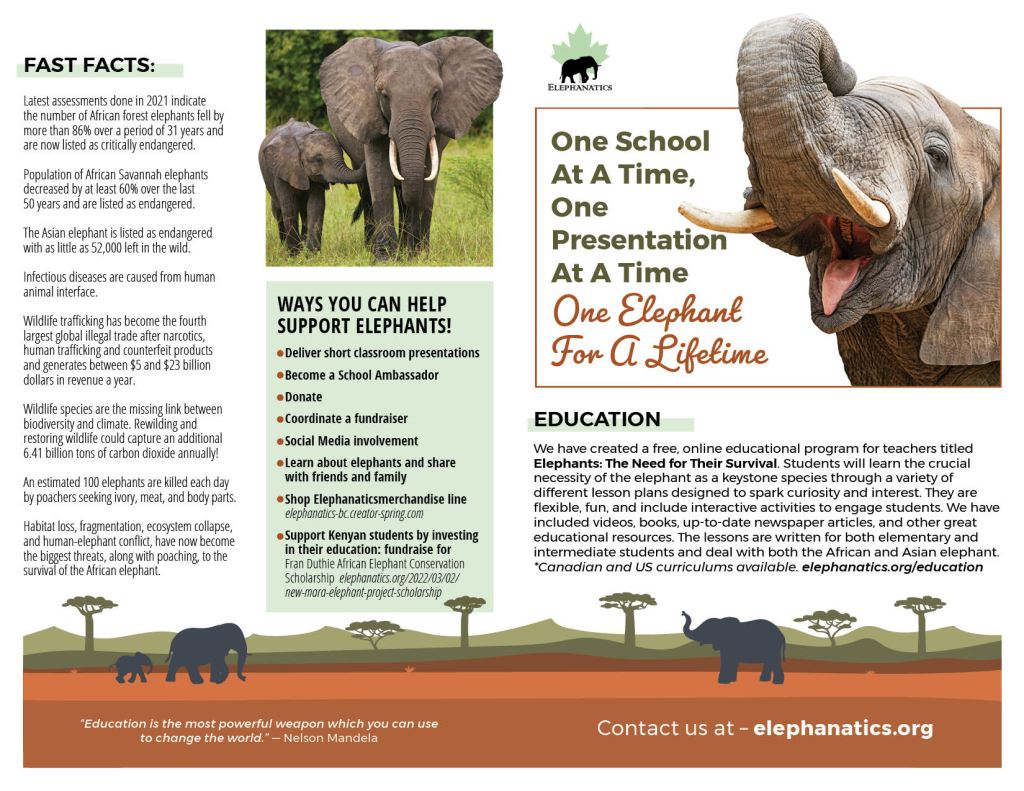African Elephants are one of the most heavily poached mammals in the world. Historic and ongoing demand for ivory is the leading reason behind their slaughter, with habitat destruction, fragmentation, and rapid human development posing significant threats also. The African Savanah elephant is listed as endangered on IUCN Red List while the Forest Elephant is listed as critically endangered.
Asian Elephants are classified as Endangered by the IUCN Red List, suffer threats from habitat loss and fragmentation as well as illegal killing for their ivory and other products, such as skin, which has fuelled poaching to supply a growing demand for elephant skin jewellery. In addition, Asian elephants are regularly victims of retaliatory attacks due to human-elephant conflict and can be killed by contact with human infrastructure, such as collisions with trains.
Conservation work done by Elephanatics Director of African Elephant Conservation/Co-Founder Dr. Jake Wall:
April 1, 2021
In a new paper led by Mara Elephant Project’s Director of Research and Conservation Dr. Jake Wall, new research has found that while elephants can live almost anywhere in Africa, their range is restricted by the growing human footprint and the available protected areas.
Key findings from the study include:
* In antiquity, elephants likely were extant across nearly the entire continent.
* Human activity largely shapes the behaviour and distribution of modern elephants.
* 62 % of Africa has suitable habitat for elephants, but the animals use just 17% of that habitat and are absent – for now – in the remaining 83%.
* Savannah elephants have larger ranges than forest elephants.
* Males of both savannah and forest elephants have larger ranges than females.
* Approximately 57% of the elephant range is currently outside of protected areas.
* Out of all the factors influencing elephant range, it is human influence and the amount of protected area that had the greatest effect.
* Both an ethic of human-elephant coexistence, and effective protected areas, are essential to securing their future.
……………………………………………
Conservation Questionnaire for Conservationists:
Based on an article written by Jeremy Hance, Environmental journalist for Mongabay. Questions still valid and open for debate in 2023.
Elephanatics Director of African Elephants/Co-Founder, Dr. Jake Wall, works with The Mara Elephant Project, using GPS tracking collars and the robust database Dr. Jake Wall developed for Save The Elephants. Scientists and ranger groups can track elephants movements in real time. Here are some photos from an aerial survey done with The Mara Elephant project.

Photo #1
In photo 1, you can see a big bull elephant with his tracking collar on. The bull looks healthy and it’s always interesting to see if there are any other elephants around, as bulls often travel alone.

Photo #2
In the second photo, you can see a female elephant travelling with her family. It’s much more difficult to count hers than solo elephants from the air. How many do you see?

Photo #3
In the third photo, there is a giant herd we found on the side of a hill. Herds this big require many photos to count them all upon return to your desk. It’s a nuanced situation, as getting closer with the plane or helicopter might make the elephants start running, whereas being too far away makes it difficult to see what’s going on. Thank goodness for zoom lenses! On one hand, it’s lovely to see this many elephants together. On the other, it makes scientists wonder WHY they are sticking so close together. Could it be the threat of human encroachment on their land? This is a growing problem in the Mara.
Aside from counting elephants from the air and ground in Samburu, Tsavo and the Masai Mara, Jake was also up in the air mapping the new railroad in Kenya to try and identify potential locations for wildlife corridors. Read more about this massive railroad project
here. As it is now, elephants and other wildlife have a rough time crossing the highway that runs from Nairobi to Mombasa on the coast. This new railroad will add to the potential dangers they face as they follow their instinctual movement patterns across the country.
There are many people working towards finding solutions for the human-elephant conflict in Kenya. The Mara Elephant Project is an organization that Elephanatics is proud to support. Find out more about their coexistence solutions
here.Dr. Jake Wall was instrumental in building a GPS monitoring system with Google in order to track elephant movements. The GPS system monitors the movement and behaviour of an elephant which can determine whether it is sick or injured. He states in the article below – “We’re also very concerned with elephant poaching for ivory, so one of the algorithms I designed looks at whether an animal has stopped moving for a given period of time, which would signal that the animal has been killed.” Read article here.
Dr. Jake Wall, collaborated with Google to create Google Street View. This technology allows internet users to take a virtual safari tour in Kenya’s Samburu National Park conservancy by mapping the area. The goal is to aid with the efforts to protect the elephant and to raise awareness about the struggle that remains from poachers. Use Street View here.
Dr. Jake Wall also worked to create Story Spheres, an interactive application, which tells stories about the elephants and people of Samburu through panoramic photographs. The Story Spheres here allow you to meet some of the elephants Dr. Wall knows so well and to help you understand the challenges of life as an orphaned elephant. He also teaches about Save The Elephants hi-tech tracking of elephants. View Story Spheres here for a pleasant journey to Samburu!
At the Canadian Association of Geologists 2015 annual meeting, Dr. Jake Wall was awarded Best Student Presentation. View it here.
View Dr. Wall’s speech at the 2015 Global March for Elephants and Rhinos here and view more photos from the march here.

Like this:
Like Loading...



 Elephanatics
Elephanatics















